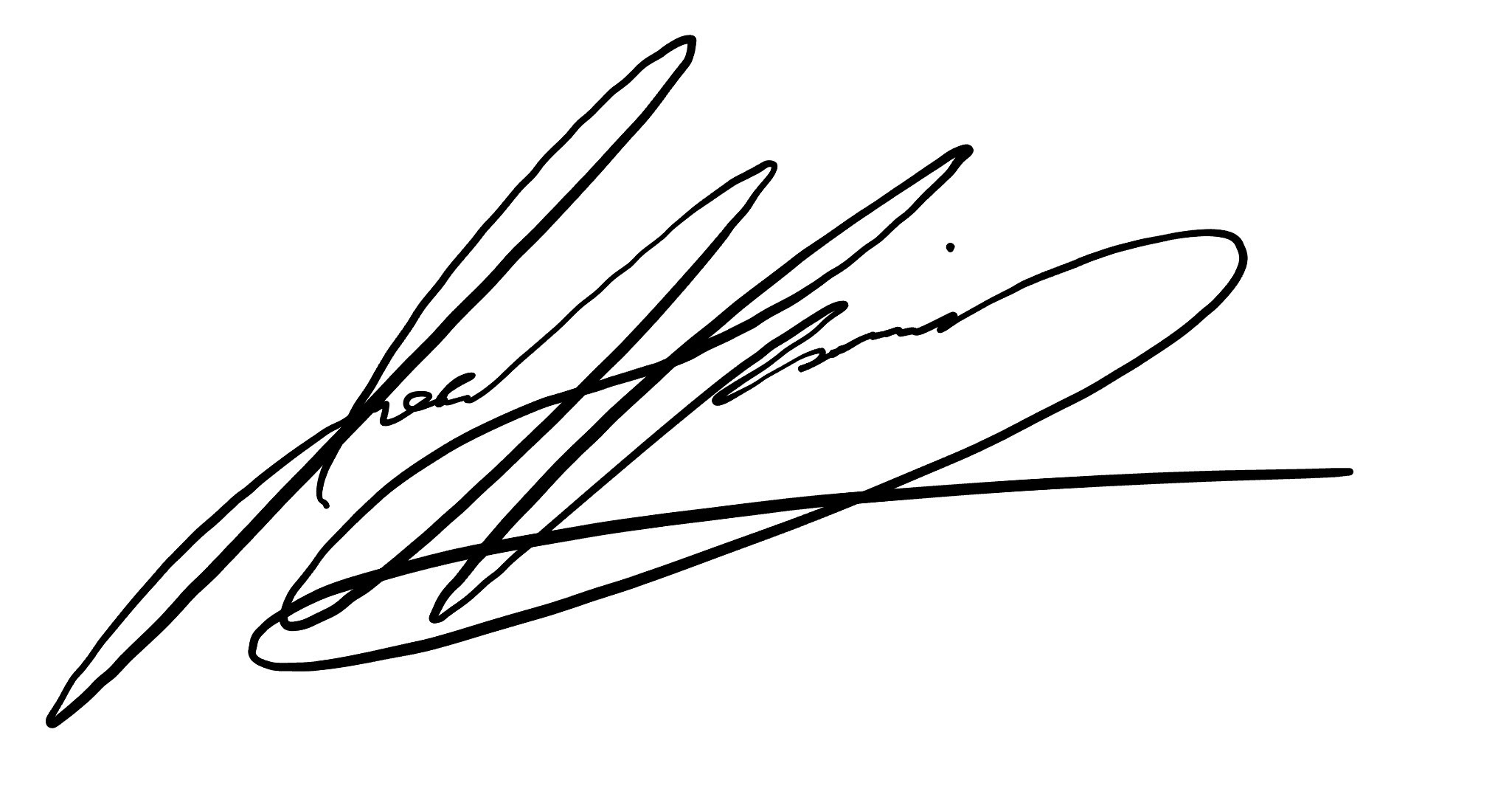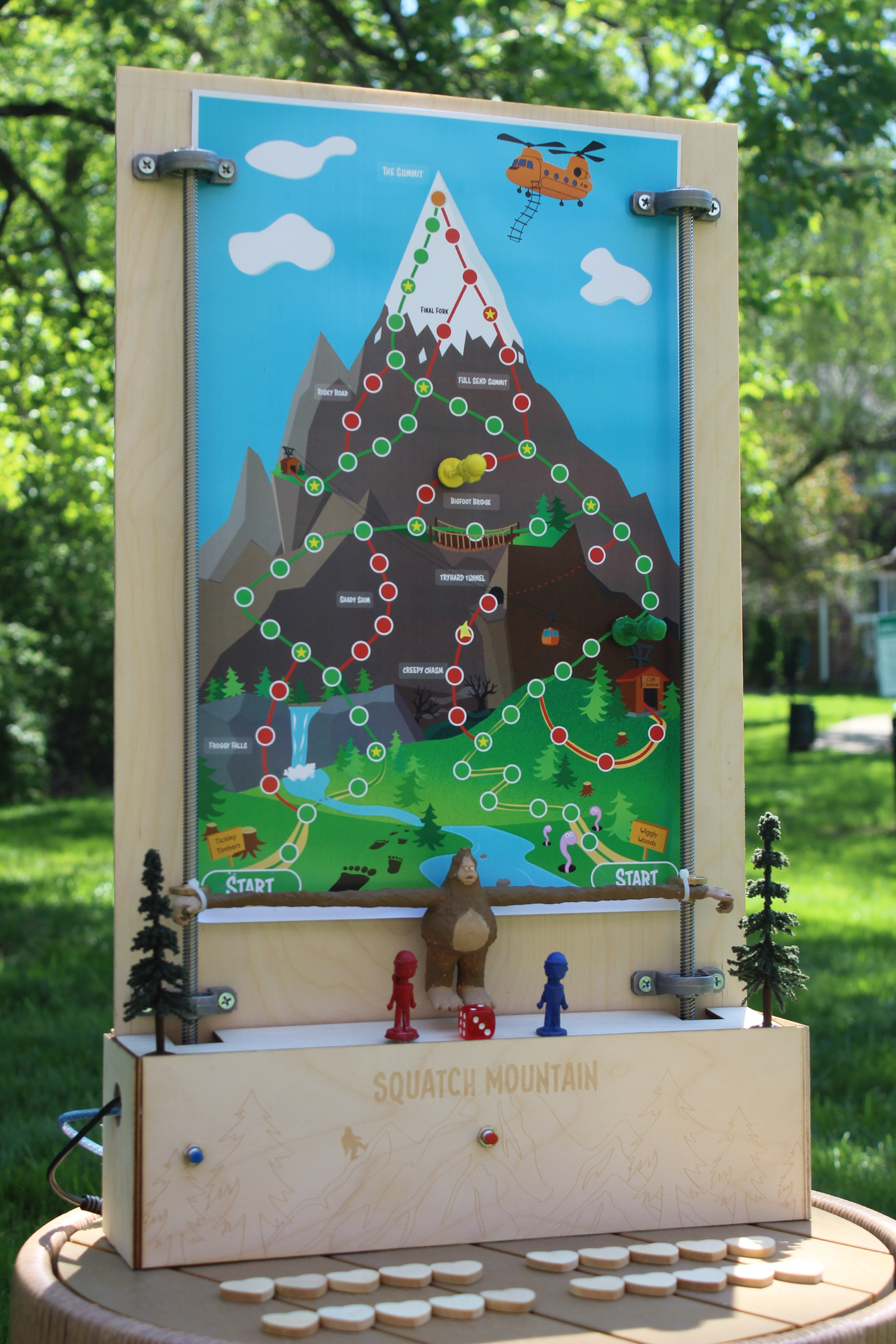
Squatch Mountain by Jack Harari, Eliot Loechner, and Julian Clensey
As part of a semester-long group project, we developed Squatch Mountain, an interactive board game designed to teach and reinforce core concepts in systems design and thinking. The objective of the game is for players to ascend a treacherous mountain while evading a mechanized Sasquatch in pursuit. The game integrates both physical and digital components. A custom-built Arduino system powers a stepper motor that moves the Sasquatch along the board. Players trigger its movement with the press of a button, introducing timed pressure and system-based uncertainty into the gameplay. The game board features two divergent paths: one high-risk/high-reward and the other low-risk/low-reward, encouraging strategic decision-making. Throughout the climb, players collect cards that introduce balancing and reinforcing loops, which dynamically affect outcomes and simulate feedback mechanisms found in real-world systems.

Low Risk Cards

Summit Peak Cards

High Risk Cards
Each card type corresponds with the trail type they are on, with each having various risks and rewards, deciding the players fate. The cards were printed on cardstock, then laser-cut into final shape.
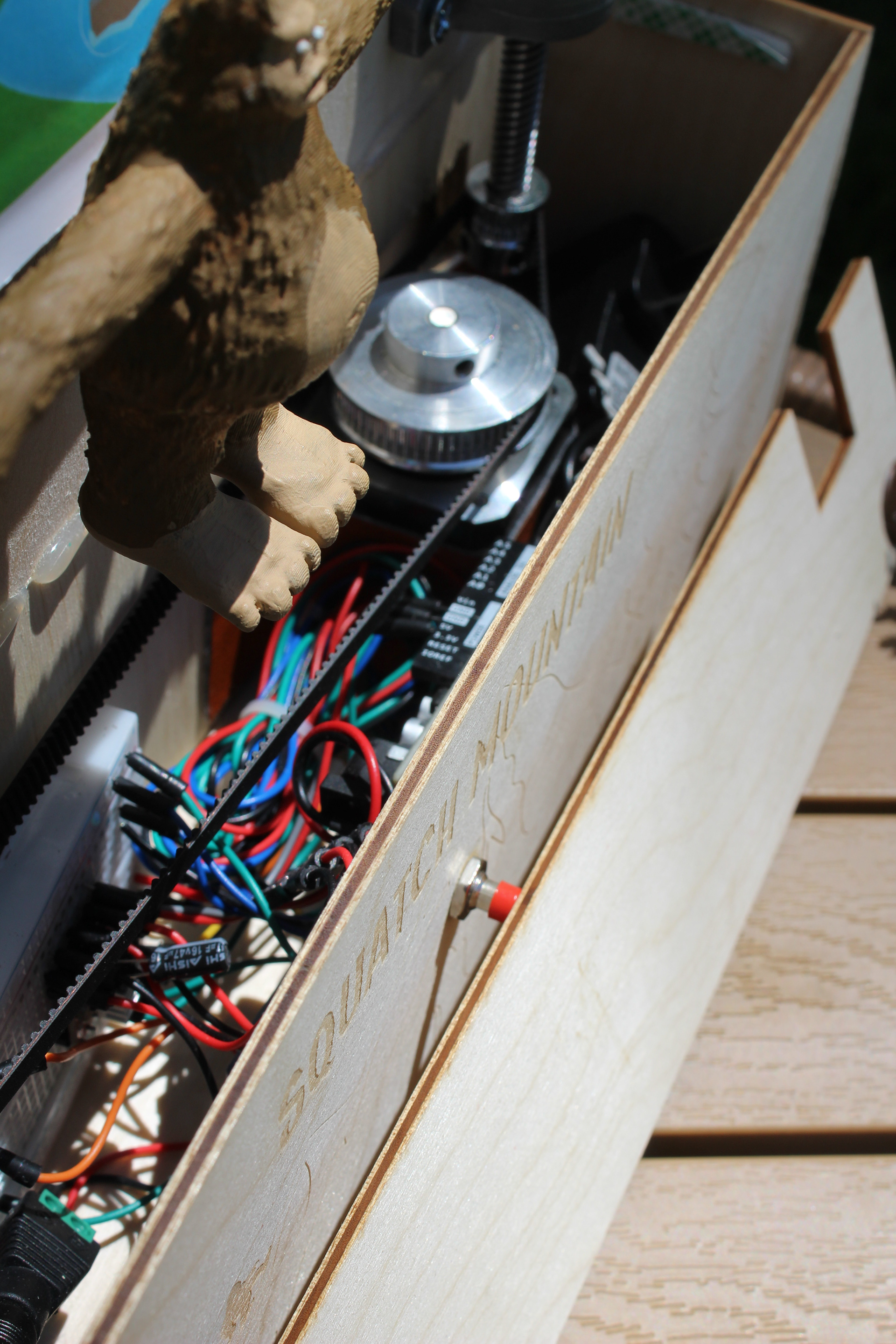
This image reveals the inner workings of our stepper motor system, powered by an Arduino microcontroller, which controls the Sasquatch’s elevation and descent in the game. The Arduino was programmed to generate random increments of motion, creating unpredictable ascension and descension patterns. This adds an element of suspense and excitement to the gameplay. Each press of the "Squatch" button triggers an uncertain outcome, keeping players engaged and on edge as they attempt to reach the Summit.
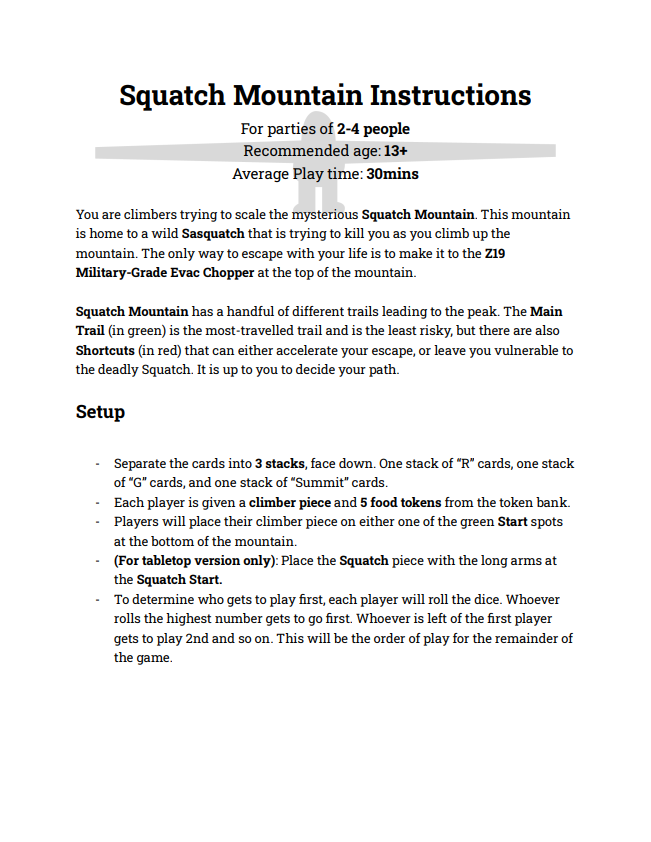
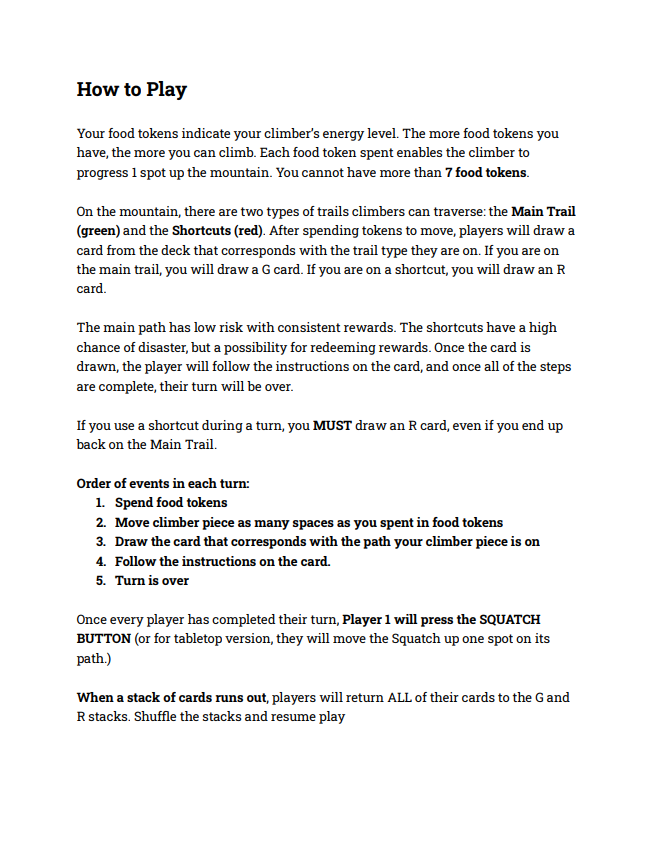
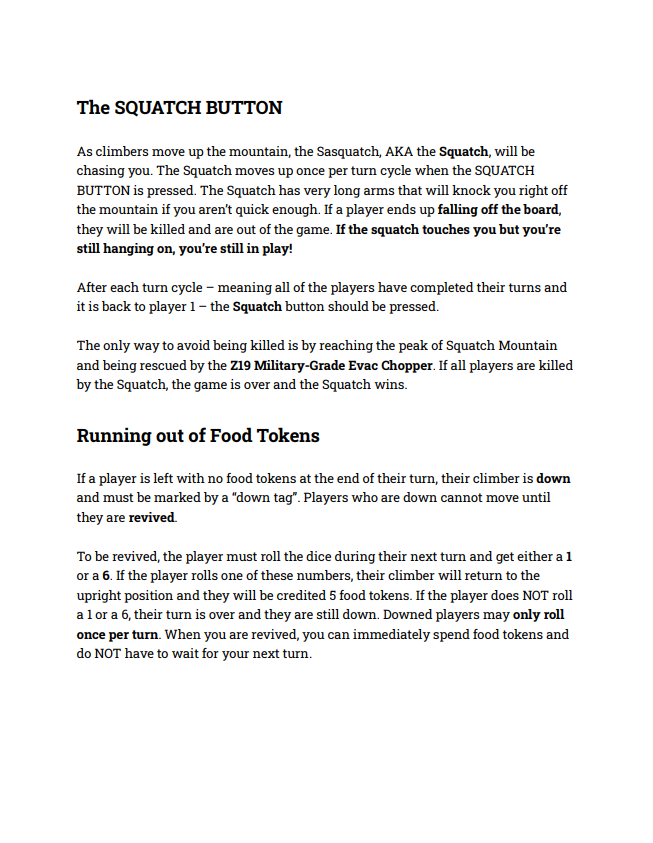
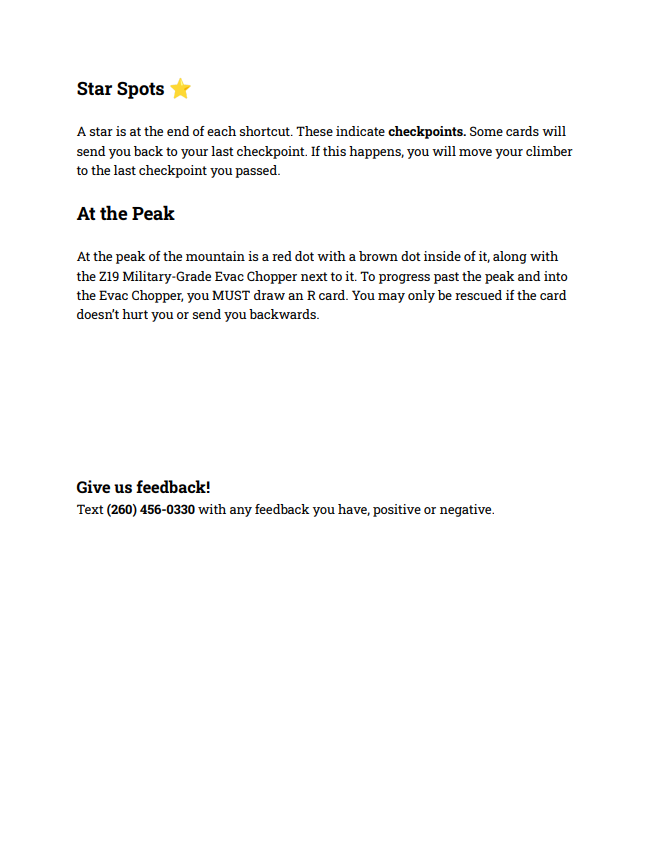
Individual Role
In our group project, I took on the role of the lead concept developer and systems integrator—the primary driver behind turning abstract ideas into functional, tangible outcomes. I was responsible for initiating and shaping the core concept of Squatch Mountain, contributing major gameplay ideas such as the card mechanics and risk-based path structure. Beyond ideation, I played a hands-on role in bringing the project to life.
My primary contributions included:
Board Layout & Physical Assembly: I designed the physical structure of the board, including layout planning and determining how various mechanical and visual components would be integrated.
Rapid Problem-Solving: I served as the go-to team member for resolving unexpected technical and design challenges throughout the process, often coming up with on-the-spot solutions to keep us moving forward.
3D Modeling & Prototyping: I created a 3D model of the game board, which we used to laser cut parts for our high-fidelity prototype, ensuring precision and a professional finish.
Cross-Functional Support: While one teammate focused on programming the Arduino and another on graphic design, I contributed to both areas by helping troubleshoot code, assisting with motor integration, and offering design feedback to align aesthetics with functionality.
Overall, I acted as the connector between concept and execution—ensuring that ideas turned into a playable, working system by staying hands-on, adaptable, and solution-oriented from start to finish.
Design Process Images
Game Rundown by Eliot Loechner
Squatch Mountain made the Eskenazi School's Innovative Teaching Paper!
